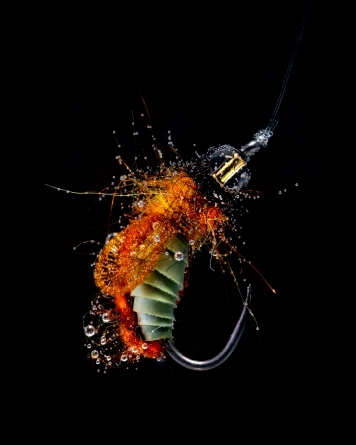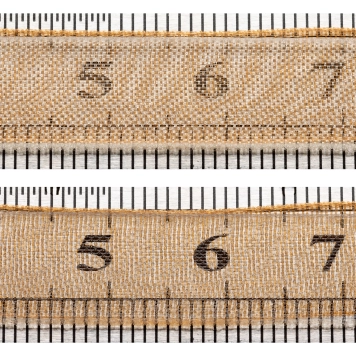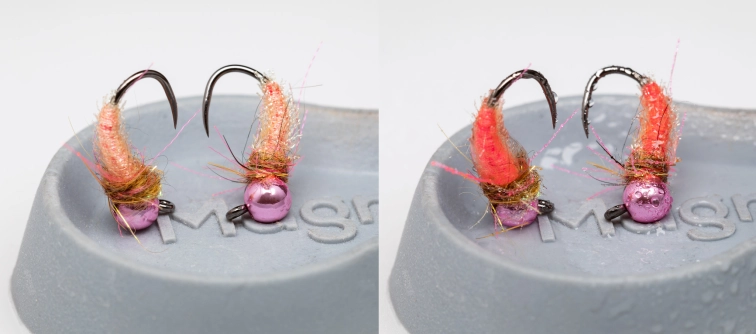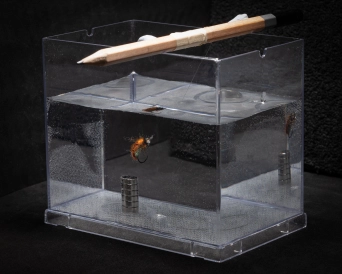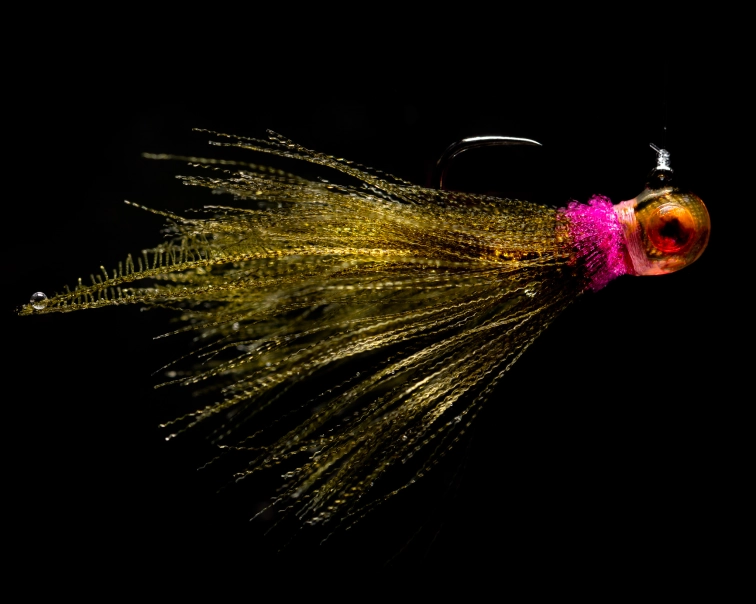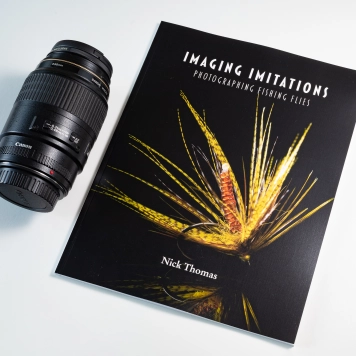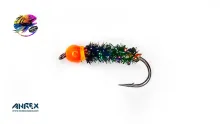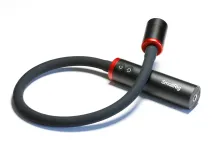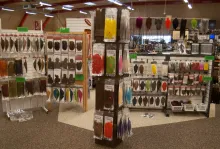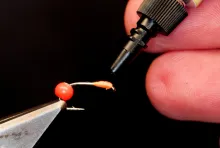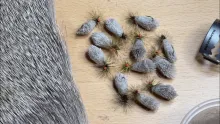Why go to the trouble of photographing a fly that is soaking wet? Well, in many cases it can dramatically alter the appearance of the imitation.
I have no idea how many photographs of flies appear every year in magazines, websites, blogs and on social media. I do know that only a very few of these show a fly from a fish’s viewpoint, i.e., attached to some tippet and underwater. Some pictures fake it by compositing a fly image shot dry with a photograph of the surface of water in a glass tank. With some flies it may look kind of OK, with others it’s just all wrong. The giveaway? Bubbles. Put a fly in water and the materials trap air bubbles, just like a real insect. That’s why many fly patterns incorporate tinsel or other reflective materials to simulate the glint of these tiny bubbles.
Why go to the trouble of photographing a fly that is soaking wet? Well, in many cases it can dramatically alter the appearance of the imitation by changing the way light interacts with the materials. Many natural and synthetic materials bend or scatter light travelling through air as it interacts with their chemical or physical structure. It’s why expensive wood furniture and floors are polished to bring out the beauty of the grain and colours and why that pretty shiny pebble on the beach looks all dull and lacklustre when it dries out. Wetting a surface with water, or coating it with varnish or polish, reduces the amount of scattering and bending of light, which can make a material look very different. With the exception of perdigones and other varnish or resin coated flies, where resin or varnish does the same job as water, all flies will, to a greater or lesser degree, look different in water. Colours intensify and materials become more transparent. It’s why wet T-shirt competitions were invented.
Organza ribbon, one of my favourite tying materials is a great example of a material that changes dramatically in appearance when wet. The image above shows the effect of wetting a sandwich of cream and tan ribbon placed on a metal ruler. When the ribbon is dry the numbers on the ruler are visible but obscured by the ribbon mesh. When the ribbon is wetted, and the nylon-air interfaces removed, it becomes translucent increasing the visibility and contrast of the ruler markings.
I use the translucency of wet organza in many of my fly designs. The body of the Glo-Bug is made from touching turns of stripped cream organza wound over fluorescent pink tying thread. When the fly is wet the organza creates a glowing halo around the underlying brightly coloured body making it very attractive to grayling. Trout like it too.
Examining or photographing flies when they are wet will show how the colour and translucency of different materials will appear and interact when the fly is being fished. However, there is a downside; the surface tension of the water collapses dubbing fibres, soft hackles and other materials into a soggy mulch.
The bottom line is that if you want to have a true picture of how a fly will look to a fish underwater, you need to see or photograph it underwater. Then all the materials are unconstrained and show their true colours and translucency. It’s actually fairly cheap and simple to do. All you need is a transparent tank, some magnets, a pencil and some tape and Blu-tac.
I use an acrylic miniature aquarium that I got from Amazon for £6. It’s far too small for any but the tiniest fish, but it’s pretty good for fly photography. The sides are vertical, thin and flat, and the optical quality is good enough not distort an image of a fly. Setting up the tank is straightforward. A stack of small magnets is placed inside the tank and another magnet attached under the tank to hold the stack in place. Using several magnets inside the tank ensures that when the fly is in position it will be well clear of the bottom of the tank where reflections from the corners may interfere with photography.
Place the tank on a piece of black card or foam. Now tie the fly to a length of suitable tippet and wrap the other end around a pencil and secure it with tape. Fill the tank with water and lower the fly down until it sticks to the top of the stack of magnets. Move and rotate the pencil to tighten the tippet and pull the fly up to where you want it for photography. Secure the pencil in place with some Blu-tac on the walls of the tank.
Set up a light above and place a piece of black foam or card behind the tank as a background. For best results darken the room and place further sheets of black material around the sides of the tank to cut out any reflections of nearby objects. Set up your camera on a tripod and compose the image. Before you start to take photographs use a small paintbrush to remove any bubbles from the walls of the tank that are in front or behind the fly.
For flies with long motile components, streamers being a prime example, photographing them underwater gives a true picture of how they will look to a fish. The Ninke Ninja is a jig streamer pattern tied with a tail and body made from stripped 25mm/1inch organza ribbon. The long fibres which are crimped by the ribbon weaving process catch the light imitating fish scales as the fibres flare and pulse as the fly moves through the water. This aspect of the material which makes organza streamers so effective can only be appreciated when the fly is in the water.
More details and methods for photographing flies underwater and floating on water are covered in my book Imaging Imitations. The book covers simple techniques that can be used by anyone wanting to take better fly photographs, including using different types of cameras, achieving good lighting and invisible methods for holding flies. Other chapters cover more complex techniques for photographing flies under water or floating, focus stacking and making composite images. The book also includes a number of case studies describing how a range of images used in different publications were created. For more details and a link to purchase the book in print or as a PDF file go to
nickthomasflytying.myportfolio.com/imaging-imitations
- Log in to post comments

